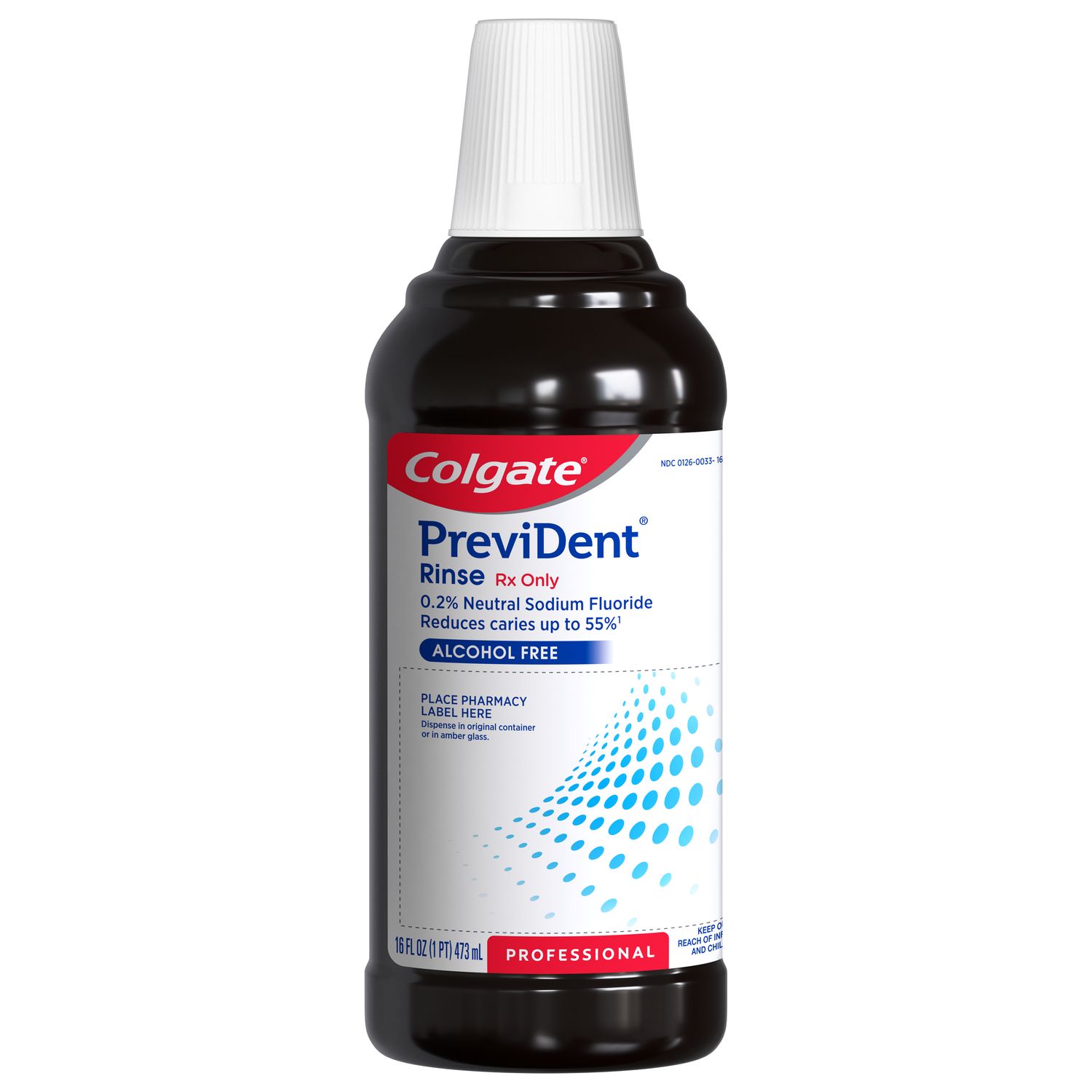
Dental caries affects an alarmingly large proportion of the U.S. population, ranging from a prevalence of 23% in children aged 2-5 years old, to as high as 96% in adults aged 65 and over. The American Dental Association (ADA) includes the use of prescription fluoride toothpastes in their guidelines for the prevention of dental caries in at-risk patients. Examples include Colgate PreviDent 5000 Booster Plus. Here, we highlight the case for using these, and six key considerations for dental students when prescribing such products to your patients.
The case for high-strength prescription fluorides
Fluoride toothpaste is a well-established method to help prevent dental caries in the general population. Evidence shows that at-risk patients in children age six year and over, adolescent, and adults of all ages can achieve greater benefit from a prescription-strength fluoride toothpaste, such as Colgate PreviDent 5000 Booster Plus or Colgate Duraphat.
For example:
This review discussed evidence demonstrating that the level of caries protection increases with increases in the level of fluoride for high-risk children and adolescents.
This randomized controlled trial found that a 5000 ppm fluoride toothpaste significantly improved the surface hardness of untreated root caries lesions in adults when compared to a regular 1350 ppm fluoride toothpaste.
This review concluded that high-concentration fluoride toothpastes offered greater caries prevention than a regular fluoride toothpaste in older patients with root caries lesions.
Upon reviewing the full body of evidence, the ADA supports the use of prescription-level 5000 ppm toothpaste for caries prevention in at-risk adults and children six years of age and older. The ADA also supports the use of these products to arrest or reverse carious lesions (cavitated or non-cavitated) on the root surfaces of permanent teeth.
What are Colgate PreviDent 5000 Booster Plus and Colgate Duraphat?
Colgate PreviDent 5000 Booster Plus and Colgate Duraphat 5000 are both high-level (prescription-strength) fluoride toothpastes containing 1.1% sodium fluoride (5000 ppm fluoride). These support patients at moderate or high risk of dental caries by helping to inhibit demineralization, enabling greater fluoride uptake and promoting remineralization.
NOTE: PreviDent is available the U.S. and Canada, but the formulation is marketed under different brand names in other global regions. For example, it is known as Colgate Duraphat 5000 in the UK and as NeutraFluor 5000 Plus in Australia and New Zealand.
Six things to consider when prescribing high-level fluoride toothpaste
1. Risk assessment
Before prescribing a high-level fluoride toothpaste, it is important to conduct a thorough risk assessment to confirm your patient’s dental caries risk. For low-risk patients, for example, an over-the-counter fluoride toothpaste like Colgate Total SF can be sufficient. Patients with an elevated risk for caries, on the other hand, may benefit from additional protective measures such as fluoride varnish or sealants.
Use a standardized tool like the ADA’s Caries Risk Assessment Form, available here in the ADA Resources section. You’ll find two versions of the form — one for patients aged 0-6 years and one for patients over six years of age — along with guidance for conducting an effective risk assessment.
2. Age
Consider the patient’s age when prescribing a high-level fluoride toothpaste. These are suitable for adults and children age six and over.
5000 ppm toothpastes are not generally recommended for use in children under age six due to the risk of fluorosis in the developing teeth. However, in cases where the child is at severe risk of caries and related complications, you may judge that the health benefits outweigh the esthetic risk of fluorosis.
3. Patient education
A high-level fluoride toothpaste is only one part of an effective caries prevention plan. It is also important to educate the patient (and parent/guardian if applicable) on good oral hygiene practices and the control of other risk factors like diet, sugar-containing drinks and snacks, and oral hygiene. Explain to the patient how each factor contributes to their current caries risk and how managing them can help promote better oral health.
Make sure that any advice you offer the patient is easy to understand and implement at home. Colgate Professional’s Patient Education site can help you to illustrate your advice with accessible caries resources. The ADA also offers various brochures in their patient education catalog.
4. Patient compliance
In order to fully benefit from the increased caries protection offered by a high-level fluoride toothpaste, the patient must use it consistently, and they must maintain behavioral changes alongside their treatment. Confirm that your patient understands this, discuss any barriers that may stand in their way, and consider what support and motivation you can offer.
5. Recall interval
When used as directed, a single tube of Colgate PreviDent 5000 Booster Plus, for example, will last approximately one month. If the patient needs to refill the prescription before their next appointment, this presents an opportunity for them to abandon treatment. This is especially true for patients who may find it difficult to collect prescriptions, e.g., those with limited mobility or those in residential care. Where possible, you can reduce this risk by providing your patient with sufficient product to last until their next appointment (or a repeat prescription, as appropriate).
6. Regional variations
Finally, it is important to note that product labelling, usage instructions and prescribing rules vary from country to country. Please refer to the Colgate Professional website and the instructions for use in your country of practice for accurate and up-to-date information.
Canada – Colgate PreviDent 5000 Plus
United Kingdom – Colgate Duraphat 5000
Australia and New Zealand – Colgate NeutraFluor 5000 Plus
Join us
Get resources, products and helpful information to give your patients a healthier future.
Join us
Get resources, products and helpful information to give your patients a healthier future.













